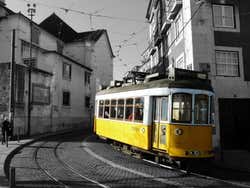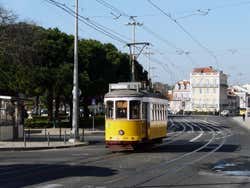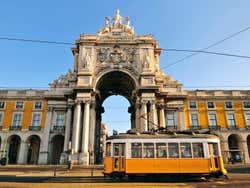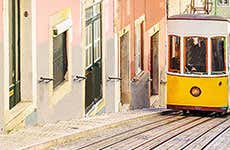
Lisbon Tram
The Lisbon trams have been in use since 1873, and continue to serve as a cultural and practical way to explore the city. Check out the ins and outs of Lisbon tramway network.
The trams in Lisbon are not only one of the most practical ways to get around the city, but also one of the city’s most popular tourist attractions.
Lisbon Tourist Tram
While you can easily and economically ride the public tram, we would highly recommend opting for the Lisbon scenic tourist tram, which follows a 1-hour route passing by Praça do Comércio, Martim Moniz, Graça, Portas do Sol (located very close to St. George's Castle), Sé (Lisbon Cathedral), Rua da Conceição, Camões and Estrela. The tourist tram also uses a traditional carriage, and includes an audio guide.
Public Tram Lines in Lisbon
Portugal’s capital currently has 6 different routes and 58 trams, of which 40 are vintage streetcars. The heritage trams are small, nostalgic, and an emblematic symbol of Lisbon, making for great photos.
The price of the ticket for the Lisbon tramway on board is € 3.10 (US$ 3.60), while if you use the 7 Colinas Card, the price is € 1.50 (US$ 1.74) per trip.
Of the six regular routes, we recommend two:
Tram Nº 28
The nostalgic tram 28 is an institution in itself. This wooden tram will transport you to another era. Its horn rings constantly to warn absent-minded pedestrians to move out of the way when it runs past the city’s long and narrow streets.
The tram links São Jorge Castle and Bairro Alto, crossing various picturesque neighborhoods for 4.5 miles (7 km), including Graça, Mouraria, Alfama, Baixa, Chiado, Madragoa, and Bairro Alto. Thousands of tourists take this tram every day.
Tram Nº 15
The tram 15 is the most frequently used tram in Lisbon because it connects the city center and Belém.
This tram is not romantic. It is useful, modern, and is always jam-packed with people, mostly tourists. If you take tram 15, keep an eye on your belongings as there are pickpockets.
The tram 15 departs from Praça da Figueira and winds its way along the riverfront through Cais do Sodré, Alcântara and the historic Belém district (Jeronimos Monastery, Belém Tower) before terminating in Algés.



